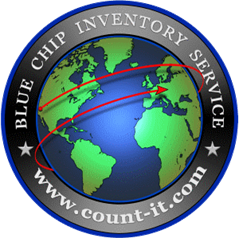
In today's fast-paced business landscape, effective inventory management has become a critical component of success. As we step into 2023, the dynamics of inventory management continue to evolve, driven by advancing technologies, changing consumer demands, and global disruptions. To stay ahead in this competitive environment, businesses must adapt their inventory management practices to maximize efficiency, minimize costs, and optimize customer satisfaction. In this blog post, we will explore the key trends and strategies shaping inventory management in 2023 and offer insights into how businesses can leverage these advancements to drive growth.
- Real-time Inventory Tracking and Analytics (300 words) One of the most significant developments in inventory management is the ability to track inventory in real time. Traditional methods of manually counting and updating stock levels are being replaced by sophisticated technologies such as RFID tags, IoT sensors, and barcode scanning. These tools enable businesses to have accurate and up-to-date information about their inventory at any given time, eliminating the risk of overselling or running out of stock.
Moreover, real-time inventory tracking is complemented by advanced analytics capabilities. With the help of machine learning algorithms, businesses can analyze historical data, customer behavior patterns, and market trends to make data-driven decisions. These insights empower businesses to optimize inventory levels, identify demand patterns, forecast sales, and streamline supply chain processes.
- Automation and Robotics (300 words) Automation and robotics are revolutionizing inventory management by streamlining operations and reducing human error. In 2023, we can expect to see increasing adoption of automated systems such as automated picking and packing, robotic arms, and autonomous vehicles in warehouses and distribution centers. These technologies not only accelerate the order fulfillment process but also minimize inaccuracies, enhance productivity, and improve workplace safety.
In addition, intelligent inventory management systems integrated with automation enable businesses to automate replenishment, order management, and demand forecasting. By leveraging machine learning algorithms, these systems can analyze historical data, identify trends, and automatically generate purchase orders, ensuring optimal stock levels and reducing stockouts or overstocking situations.
- Integration of Supply Chain Ecosystems (300 words) In the era of globalization, supply chains have become increasingly complex, involving multiple stakeholders, including suppliers, manufacturers, distributors, and retailers. To tackle these challenges, businesses are embracing the integration of supply chain ecosystems in their inventory management strategies.
Through the use of cloud-based platforms, Application Programming Interfaces (APIs), and Electronic Data Interchange (EDI), companies can seamlessly connect with their suppliers, partners, and customers, sharing real-time information on inventory levels, order status, and delivery tracking. This integration facilitates collaborative forecasting, efficient replenishment, and ensures timely order fulfillment.
- Demand Sensing and Forecasting - Accurate demand forecasting has always been a crucial aspect of inventory management. In 2023, businesses are leveraging advanced technologies, such as artificial intelligence and machine learning, to enhance their forecasting capabilities. Demand sensing algorithms analyze various data sources, including point-of-sale data, social media trends, and economic indicators, to identify demand patterns and predict future demand more accurately.
With improved forecasting accuracy, businesses can optimize their inventory levels, reducing excess stock while ensuring sufficient supply to meet customer demand. This leads to reduced carrying costs, minimized stockouts, and improved overall customer satisfaction.
- Sustainable Inventory Management - As environmental concerns continue to grow, sustainability is becoming an integral part of business operations, including inventory management. In 2023, businesses are striving to adopt eco-friendly practices in their supply chain processes.
Sustainable inventory management involves reducing waste, optimizing packaging, and minimizing transportation emissions. By implementing strategies such as just-in-time inventory, cross-docking, and reverse logistics, companies can reduce their carbon footprint, lower costs, and enhance their brand reputation.
Inventory management is at the core of every successful business, and as we move forward in 2023, it's essential to embrace the evolving trends and technologies shaping the industry. Real-time tracking, automation, integration of supply chain ecosystems, advanced demand forecasting, and sustainable practices are just a few key areas to focus on.
By leveraging these advancements, businesses can achieve higher efficiency, reduced costs, improved customer satisfaction, and gain a competitive edge in the market. Embracing innovation and staying agile will be crucial as the future of inventory management continues to evolve rapidly.


This calculator can help you determine the selling price for your products to achieve a desired profit margin. Try It Free >
Our Audit/Verification Service is available globally - from Thousand Oaks, CA to Timbuktu. Learn More >
Don't just take our word for it. Find out what our clients are saying about our services.
See actual testimonials >
From Retail and Gross Margin Inventory reports, to SKU and Price Verification reports, Blue Chip Inventory provides complete inventory service. See samples >






